A successful tomato harvest demands careful attention to meticulous watering and minute detailing throughout the growing season as it is crucial for a successful harvest.
This complete guide will walk you through the critical stages of watering the tomato plants and adjusting the schedules as the growing season progresses.
So, let us now dive into the secrets of watering tomatoes like a pro and ensure a healthy and flavorful harvest.
Also, read: What Is The Best Time To Water Tomato Plants?
Understanding The Watering Needs By The Growth Stage
Table of Contents
The requirement for water in the case of tomato plants varies in different stages, and below is an entire schedule that states the exact watering needs for tomato plants in various stages of growth.
Also, note that sudden changes in the watering schedule result in a lot of issues, so it is advisable to gradually reduce the watering before the final ripening stage.
Seedling (1-4 Weeks)
Seedling is the very first stage and lasts for about 1-4 weeks. During this phase, there is a requirement for daily watering, as the seedlings need consistent moisture for healthy plant development.
Vegetative Phase (4-8 Weeks)
The vegetative phase lasts for 4-8 weeks and requires deep watering techniques that are approximately 2-3 times a week and hence encourage rapid fruit production.
Flowering And Fruit Development Phase (8-12 Weeks)
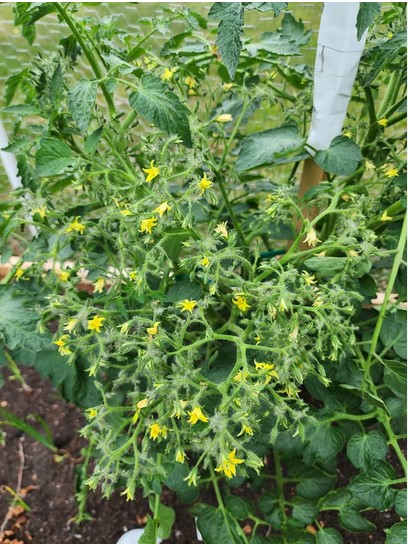
The flowering and fruit development phase requires frequent and deep watering. It needs watering approximately 1-2 times a week and encourages uniform fruit growth.
Ripening Stage (Weeks Before Harvest)
The ripening stage requires watering gradually, as it is the last lap before you will ultimately move toward the harvesting process.
Less water before the harvesting process enhances the flavor of the fruits and also prevents the fruit from splitting.
Factors Influencing The Watering Frequency
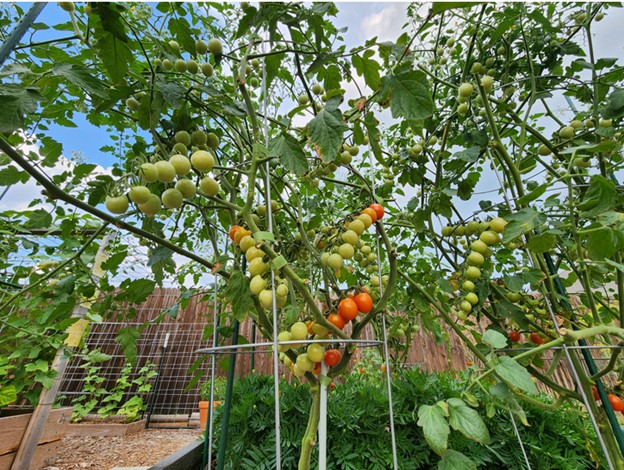
Several factors determine the watering frequency and below we have discussed a few of them.
Those include:
1. Weather
Climate and weather play a very important role in watering, as tomato plants in hot regions or hot climatic conditions require frequent and more water to survive as the moisture quickly evaporates.
Whereas in areas of moderate climate or normal temperature, the watering needs aren’t so high and remain under the normal range and frequency. Also, rainfall or seasonal changes reduce the need for watering.
2. Soil Type
Sandy soil requires frequent watering as the water dries out quickly, but in the case of loamy soil, the soil can retain the necessary moisture and drains out the excess water efficiently.
In the case of clay soil, watering less often is advisable to prevent root rot and waterlogging.
3. Growth Stage
As discussed above, the watering needs vary in different stages of growth right from the first stage till the harvest. As the need for water changes with the development of the plant, therefore, adjusting the watering needs is crucial for healthy plant growth and fruit development.
4. Container Gardening
In the case of ground tomatoes, the watering schedule will be for 2-3 weeks depending on the weather whereas in case of the potted tomatoes the water in the soil dries out faster than the in-ground plants and hence requires daily watering in hot weather.
5. Sunlight Exposure
Too much exposure to sunlight increases the rate of evaporation and hence increases the need for frequent and more watering. A lower exposure to sunlight keeps the soil moist for a longer period and hence reduces the need for frequent watering practices.
6. Mulching And Ground Cover
Additionally, mulching is an effective technique that reduces the need for watering frequently by slowing down the rate of evaporation. In the case of bare soil, the water dries out faster thereby suggesting more watering practices in the case of mulching it helps to retain the heat but at times leads to excessive moisture buildup.
7. Plant Variety
The tomato variety is another factor that determines the watering needs of the plants. Certain varieties require more watering, whereas a few need less frequent watering techniques.
Therefore, it is essential to keep the tomato variety in mind before deciding on the watering schedule.
8. Watering Method
There are quite a few watering techniques that provide the necessary water to your tomato plants if used properly and effectively.
Drip irrigation or soaker hose reduces the need for frequent watering and provides a slow and consistent amount of water to the plants.
Whereas, hand watering needs consistent and regular watering as it helps you to take complete control over the moisture levels.
Signs Of Over-Watering
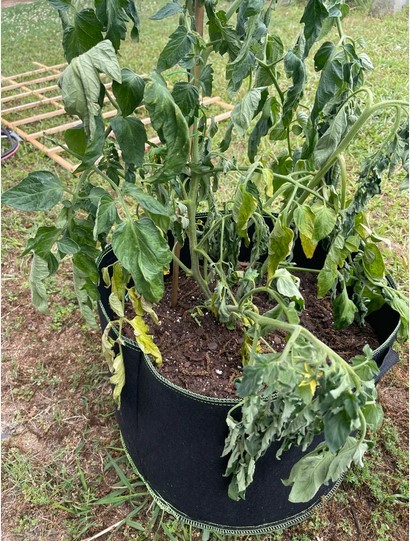
Overwatering impacts the tomatoes and is a common problem that gardeners encounter.
Here are some signs that will help you to avoid overwatering if you are vigilant.
1. Wilting Leaves
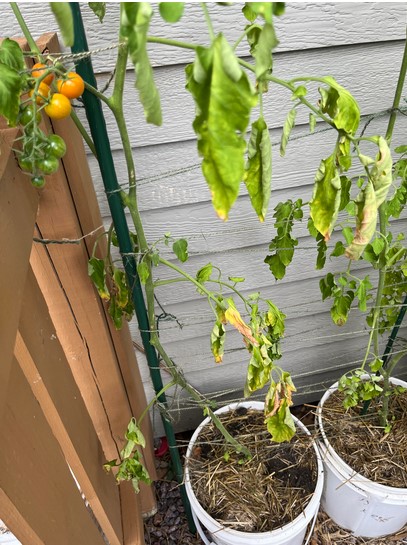
Wilting leaves are at times often mistaken as a sign of under watering but actually, it is a result of over-watering.
This is because the soil becomes too saturated with water thereby causing root suffocation and rot. Since the plants fail to absorb the necessary nutrients and water properly the leaves start drooping or wilting.
2. Yellowing Leaves
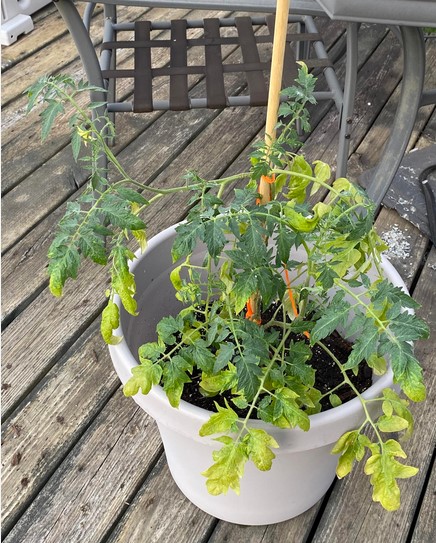
Yellow leaves on tomato plants are also alarming and indicate overwatering or improper drainage issues. The excess water suffocates the roots and prevents nutrient uptake, which in turn makes the leaves yellow.
Therefore, the overall yellowing of leaves requires quick attention and balanced watering techniques to restore the plant health.
3. Soft, Mushy Fruit
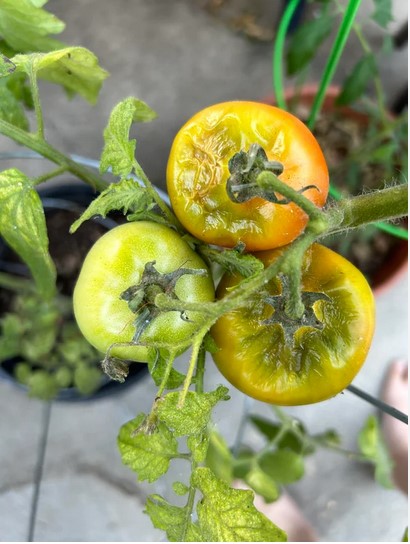
Soft, mushy tomatoes are indeed disheartening and are a result of overwatering.
The excess moisture in the tomatoes leads to swollen, soft fruit with a bland taste and mushy flesh that can be avoided by following proper watering techniques.
4. Fungal Disease
Fungal diseases thrive in damp and humid conditions and spread rapidly by damaging both the leaves and the fruits.
So, to prevent fungal diseases, avoid excess watering and also ensure good spacing for air circulation.
5. Cracked Fruit
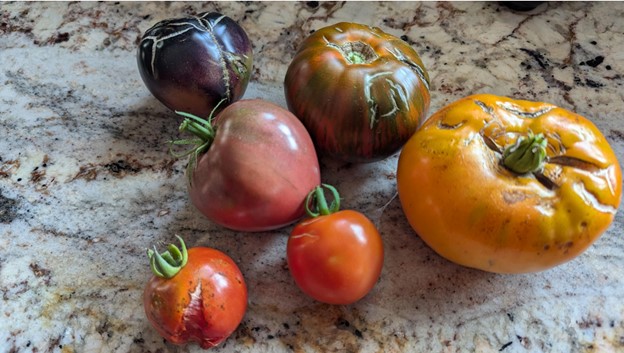
Cracked or split tomatoes are frustrating and happen due to the sudden change in water supply or due to the uneven moisture level.
The skin of the tomatoes fails to keep up with the rapid swelling of the fruit and therefore splits.
Heavy or over-watering causes the fruit to swell suddenly and crack leading to bursting.
Read through this guide and know When Does The Tomato Plants Stop Producing Tomatoes?
Signs Of Underwatering
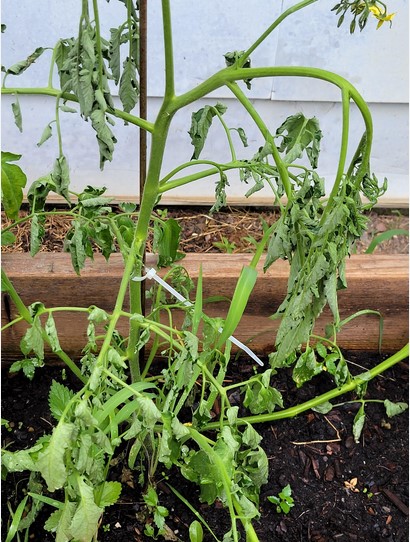
Underwatering also has detrimental effects on tomato plants and below are some tell-tale signs that will help you avoid underwatering your plants.
- Dry Soil
- Wilting Leaves
- Stunted Growth
- Blossom Drop
Best Practices To Gradually Stop Watering The Tomato Plants
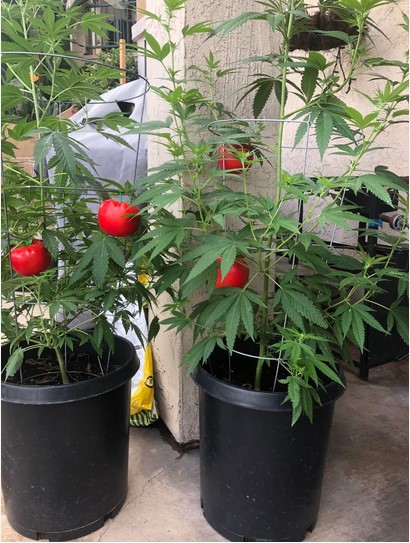
1. Abruptly stopping the watering practices too early before the onset of the ripening stage results in smaller fruit size.
2. Additionally, over-watering during the ripening process also leads to cracked tomatoes with a reduced flavor.
3. Adjusting the watering schedule further prevents severe plant stress.
4. Avoid frequent and shallow watering techniques.
5. Incorporate mulching to reduce the need for extra watering.
6. Monitor the weather and cut back on additional watering practices accordingly.
7. Avoid overwatering just before harvest.
Final Thoughts
Now that it’s time to wrap up, remember the watering schedule for tomato plants is extremely important as it varies according to the growth stage.
So, be thoughtful while you water the plants and also honor their needs to maximize the harvest.
Leave a Reply